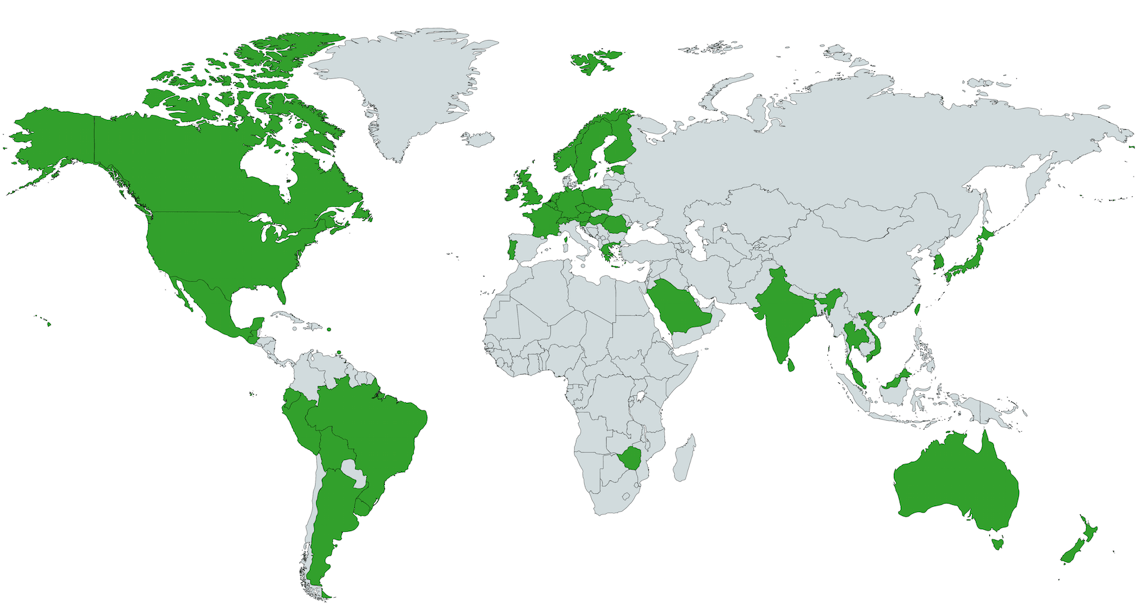On the sixth anniversary of World IPv6 Launch, we’re sharing an updated report on the State of IPv6 Deployment in 2018. It really is staggering how far IPv6 deployment has progressed in six years. In mid-2012, Google measured less than 1% of users accessing their services over IPv6. Today that figure is getting close to 25%. Several major operators now deliver the majority of traffic from major content sources like Google, Akamai and Facebook over IPv6. Individual operators, like T-Mobile USA, have deployed IPv6-only networks for their subscribers.
Seven years ago, the Internet Society helped to organize World IPv6 Day, where thousands of ISPs and websites joined together for a successful, global-scale, 24-hour trial of IPv6. A year later, for World IPv6 Launch, major ISPs, home networking equipment manufacturers, and web companies around the world permanently enabled IPv6 for their products and services.
To help showcase the progress made in the six years since World IPv6 Launch we are sharing:
– an updated report on the State of IPv6 Deployment 2018
– an infographic that clearly shows the scale and scope of IPv6 deployment
– and a fun quiz for you to test and share your knowledge of the State of IPv6 Deployment
To help you get started, here are SIX facts about IPv6 deployment in 2018:
1. Many of the major network operators in the U.S., Europe and Asia have massively deployed IPv6. For example, in the U.S. T-Mobile has 93 percent, in India Reliance Jio has 87 percent, in the U.K. British Sky Broadcasting has 86 percent and in Belgium VOO has 73 percent IPv6 deployment.
2. Nearly half a billion people use IPv6 among just the top 15 ISPs combined. India’s Reliance Jio has the most IPv6 users with 237 million, the United States’ Comcast is number two with 36 million and the United States’ AT&T is third with 30 million. Reliance Jio activated over 200 million subscribers with IPv6 connectivity in just nine months, between September 2016 and June 2017.
3. IPv6 deployment is global, and the top 10 countries using the new protocol are Belgium, Greece, Germany, the U.S., Uruguay, India, Switzerland, Japan, Malaysia and Brazil. Belgium was the first country in the world where the majority of connections to IPv6-capable content providers used IPv6.
4. 80 percent of smartphones in the US on the major cellular network operators (AT&T, Sprint, T-Mobile and Verizon) use IPv6. Less than three years ago this was under 40 percent.
5. In 2012, less than one in a hundred connections to Google services used IPv6. Today that number is nearly one in four.
6. Many of the largest Internet content providers and content delivery networks provide IPv6 service by default. 28 percent of the Alexa Top 1000 websites are IPv6-enabled, including large streaming video services.
Our core recommendations are to:
(a) start deploying IPv6 now if you haven’t already,
(b) use established RFP requirements like RIPE-554: Requirements for IPv6 in ICT Equipment, and
(c) take advantage of existing IPv6 deployment information including the Internet Society’s Deploy360 Program.
Here are some links to other resources sharing data and celebrating IPv6 deployment around the world in 2018:
- An update from Bob Hinden about IETF activity and IPv6 deployment
- Akamai blogpost including updated measurement results
- JPNIC blogpost summarising the status of IPv6 deployment in Japan
- APNIC are running a week of IPv6 content including an online training component:
– https://blog.apnic.net/2018/06/04/advice-for-migrating-to-ipv6-in-an-isp-environment/
– https://training.apnic.net/events/2018-06-06-ipv6-launch/ - RIPE NCC are hosting an online EDUCA event about IPv6 deployment
- LACNIC held a Webinar (in Spanish) yesterday and will make a recording available
- Oracle Dyn Internet Intelligence blogpost examining IPv6 deployment through historical recursive DNS data
- The UK IPv6 Council published an update on Six Years of IPv6 in the UK
IPv6 deployment will continue growing as more operators start and grow their deployments around the world, and new content and hosting providers enable IPv6 for their customers. As we mark this milestone in IPv6 deployment history, we wish all our readers a Happy Launchiversary!

